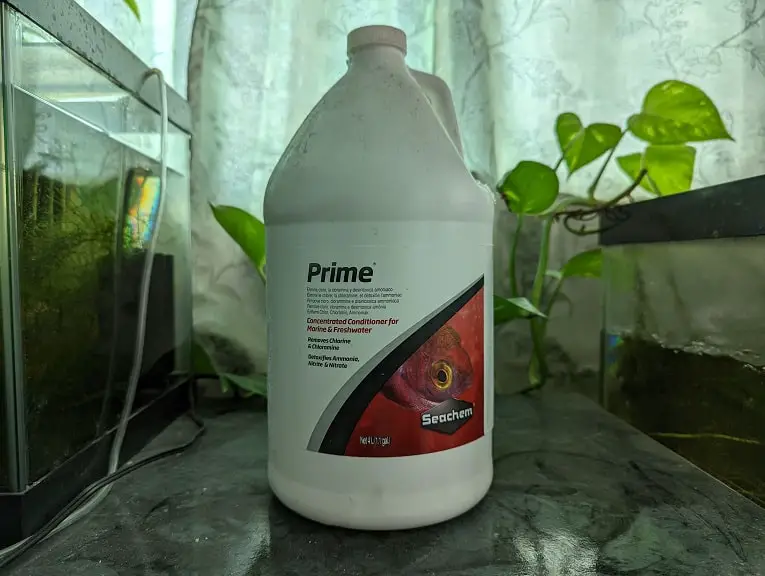Seachem Cupramine will help treat Amyloodinium, Cryptocaryon, Ichthyophthirius, Oodinium and other parasites. If you accidentally overdose this product, however, then it will become very toxic to the fish and other inhabitants in your fish tank.
You can check out this guide to see what you can do when you add too much Cupramine in your aquarium.
How to tell that you overdose Seachem Cupramine
You can generally tell that you overdose Seachem Cupramine if your fish start to behave abnormally. These abnormal behaviors include the following:
- Gasping for air on the top of the water surface.
- Darting around the tank unprovoked.
- Head or the entire body of your fish starts to twitch.
After following the official dosage directions, the copper concentration should be around 0.25 mg/L for a freshwater tank or around 0.5 mg/L for a saltwater tank. Seachem recommends that you don’t go beyond 0.6 mg/L.
To measure the copper level in your aquarium, you will need to get a testing kit such as the Seachem MultiTest Copper (which you can find on Amazon with this link). (#CommissionsEarned)
How to fix a tank that has been overdosed with Cupramine
If you believe that you overdose your aquarium with Seachem Cupramine, then you can try doing the following:
Removing your fish from the tank
If you fish is reacting really badly, then you might want to remove them from your tank and then place them in water bucket or water container.
For the bucket or container, we highly recommend that you use distilled water. This is because tap water needs to be treated with a dechlorinator like Seachem Prime, which will also make Cupramine more toxic.
While you can still use Prime to prepare the water in the bucket or container, you need to wait 48 hours to safely add fish from a tank. By that time, Prime will remove chlorine and chloramine, and then fully dissipate from the water.
Therefore, it is best to use distilled water in an emergency.

How to fix a Cupramine overdose by doing a water change
To lower the Cupramine in your tank, we recommend that you do a water change with distilled water. As we stated above, using tap water posed a number of challenges due to dechlorinators making copper more toxic.
To add tap water, for example, you will need to first put the tap water in a water bucket or water container. You can then add Seachem Prime to remove chlorine and chloramine. Afterwards, you have to wait for at least 48 hours for Prime to fully dissipate before you can add it in your tank.
Since distilled water doesn’t have chlorine and chloramine, you should be able to add it right away in your tank.
To do a water change, swap out the appropriate amount of water to return to the recommended concentration for Cupramine, which is 0.25 mg/L for a freshwater tank or around 0.5 mg/L for a saltwater tank. For example, if your test kit reads that you have twice the amount of copper level, then you need to do a 50% water change to dilute the concentration to normal levels.
Test your water by using a copper testing kit to see if you are around 0.25 mg/L for freshwater or around 0.5 mg/L for saltwater. If the concentration is higher, then you need to do another water change. If the concentration is lower, then you need to carefully re-dose Cupramine to return it to the recommended treatment level.
How to fix a Cupramine overdose by using carbon
Carbon media will also help remove Cupramine when you overdose your tank. Therefore, you may want to add it in your filter or directly in your fish tank if you don’t have access to distilled water for an emergency water change.
Make sure you test your tank water often after adding carbon to remove copper. If you leave the filter media in your tank for too long then it will lower or even completely remove Cupramine from your fish tank. If that happens, then you need to start the treatment over again by dosing the correct amount.
